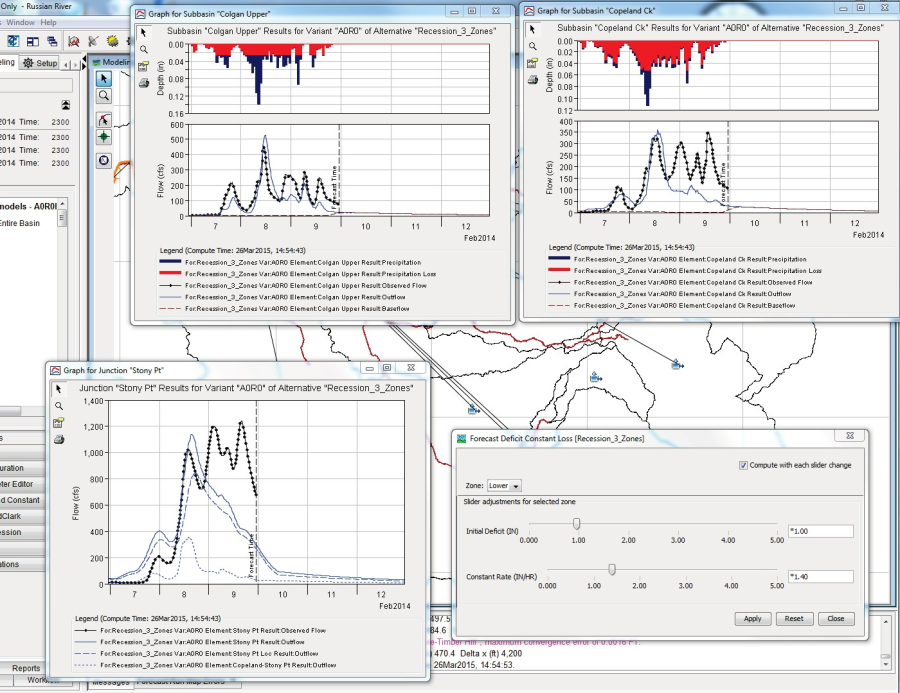HEC-HMS can be setup for a HEC-RTS watershed implementation before or after importing the HMS model, but this must be done prior to assigning an alternative key or linking the models.
This setup is done from HEC-HMS, not in HEC-RTS.
During an event, good forecasts, need to be made quickly; there is not much time to adjust parameters to optimize the model. To accommodate this, the watershed is divided into "zones", comprised of similar (usually adjacent) subbasins. Zonal parameter editors are available for efficiently modifying parameters to improve model output.
After zones are setup, create an HEC-HMS "forecast alternative", which will contain a basin model, a meteorological model, and zone configurations for loss rate, transform, base flow, and reach routing. Once the HEC-HMS model is part of the HEC-RTS watersheds, the MFP model alternative that will be built will use one of the zones for future precipitation. Zonal editors allow the user to adjust parameters through a table interface or through slider bar editors as shown in Figure 8.1.

Figure 8.1 HEC-RTS - Use of Slider Bars for Model Calibration